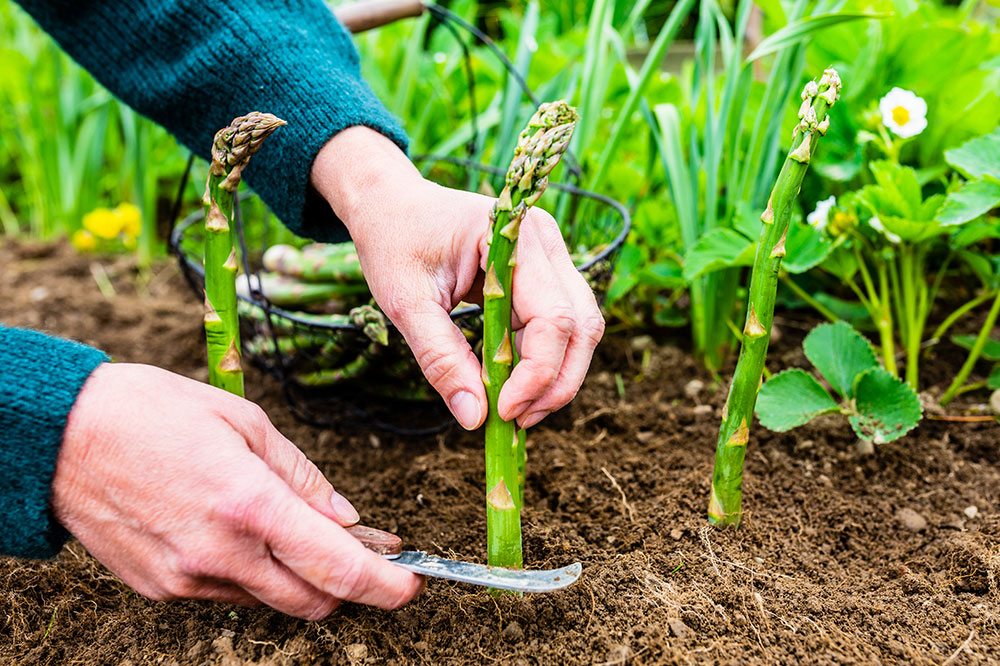Key Things to Know About Growing Asparagus
Asparagus is popular among gardeners and food enthusiasts for the right reasons. It is nutrient-rich and delicious. Growing fresh asparagus in your yard can be a wonderful experience. In this article, we’ll cover everything you need to know about how to plant asparagus, from choosing the right location to harvesting your crop. Following the tips will provide you with enough information to plant asparagus. So, here are some of the ways you can grow asparagus:

Choosing the right location
It’s crucial to pick an area that receives at least 6 to 8 hours of direct sunlight daily because asparagus needs much sunlight to grow. The pH of the soil should range from 6.0 to 7.0, and it should be rich, well-drained, and somewhat acidic. Pick a location where there won’t be any other plants near the asparagus because it needs lots of room to spread out.
Preparing the soil
It’s crucial to prepare the soil for asparagus. Remove grass and weeds from the area where you intend to plant. This can be done by hand, with a hoe, tiller, or both. Work compost or well-rotted manure into the soil after clearing the area of weeds to increase the soil’s fertility.
Planting the asparagus crowns
The roots of one-year-old plants, known as crowns, are commonly used to grow asparagus. Asparagus crowns are available online or at garden supply stores. Plant your crowns in the early spring when the soil can be worked.
Dig a trench about 6 inches deep and 12 inches broad before planting asparagus crowns. Make sure the soil is free-draining and loose—place crowns in the trench between 12 to 18 inches between them. Add 2-3 inches of dirt over the crowns.
As the asparagus grows, add soil to the trench until it is leveled with the earth around it. This procedure, known as “hilling,” aids in preserving the asparagus crowns’ cover and security.
How to take care of asparagus plants?
In particular, during dry seasons, asparagus plants require regular irrigation. Deeply water your plants once or twice a week, depending on the weather and soil conditions. Asparagus will benefit from a layer of mulch added around the plants.
It’s critical to fertilize asparagus to promote strong growth and high yields. Early in the spring, before the spears appear, and again in mid-summer, after the harvest is complete, apply a balanced fertilizer.
Harvesting your asparagus crop
Asparagus spears can be harvested in the second or third year following planting. Allow the spears to develop and mature the first year without harvesting. Doing so establishes a solid root structure that will support subsequent harvests.
When the spears are between 6 and 8 inches tall, use a sharp knife or scissors to cut them just above the earth as fresh spears will swiftly emerge; harvest spears frequently, every two to three days. After 6 to 8 weeks, or when the spears start to get weak and spindly, stop harvesting.
Allow the asparagus plants to grow and produce foliage once the harvest is complete. This aids in increasing the roots’ energy stores in preparation for the following year’s harvest.
What is the best season to grow asparagus?
Early April, when the earth is just beginning to warm up after the winter, is the most incredible time to grow asparagus. Typically, asparagus plants are grown from crowns, the roots of one-year-old plants. Depending on your region and temperature, these crowns should be planted as soon as the soil can be worked in the spring, typically in March or April.
- Asparagus should be planted early in the growing season to give the plants time to establish strong root systems before the summer heat hits. Asparagus plants require well-drained soil, whole light, and lower temperatures for healthy growth.
- Asparagus plants may need more time to establish their root systems before winter sets in; therefore, planting asparagus in the fall is not advised. As a result, frost and freezing weather can harm or kill asparagus plants because they are delicate.
- You can plant asparagus in the fall if you reside in a warmer region, such as the southern United States or another region with moderate winters. It’s crucial to pick a site that offers shade during the warmest hours of the day to shield the plants from the harsh summer sun.
- Early spring is the ideal time to grow asparagus because the earth is just beginning to warm up, and the plants have plenty of time to establish their root systems before the summer heat hits. So you can guarantee a plentiful harvest of delicious, fresh asparagus for years to come by planting your asparagus at the proper time.
Conclusion
Growing asparagus may be a rewarding experience for gardeners of all expertise levels. A successful harvest depends on planting asparagus during the ideal asparagus growing season in a location with well-drained soil and whole light. Early spring is the best time to plant asparagus because it allows the plants to establish their root systems before the summer heat arrives.
Giving your asparagus plants the proper care and attention can yield a bumper crop of delicious, fresh spears each year. So, why not grow asparagus in your garden this year?


